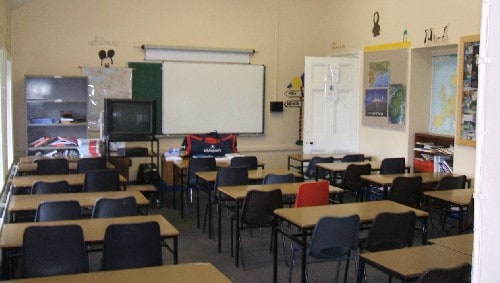
Physics hasn’t gone away but the students have Credit: Wikimedia Commons
By James Dacey
Just a quick question for you to ponder over the weekend: what could the UK do to improve the quality and popularity of physics in secondary education?
I ask this now because several UK newspapers have run stories this week about the decline of physics education in the UK. The headlines emerged following a meeting at the Houses of Parliament on Wednesday, the beginnings of a select committee inquiry into the teaching of science, maths and English in schools.
When it came to physics, the focus was on the decline of the A-level award, which students typically study at age 16-18, where the closest US equivalent is probably the AP higher. The two damning statistics that have been doing the rounds are:
a) More than one in four state schools are unable to offer A-level physics due to a lack of specialist teachers.
b) The number of students taking A-level physics has dropped to 29,000 from 44,000 in the 1980s.
The UK Institute of Physics (IOP) responded by pointing to six main problem areas for physics education, which included: the quality of teaching; access to learning; the nature of assessment; the ethos; and the pull of the subject.
The other category is the curriculum itself, where the Institute says that declining standards are deterring students from taking physics or leaving them woefully underprepared for a university education in physics. The Insititute believes that too much change too quickly in STEM [science, technology, engineering and mathematics] has left the curriculum piecemeal and incoherent.
“Physics should have a distinctive place in the curriculum,” reads the IOP’s statement. “The invention of a subject called science has led to a loss of identity of the sciences.”



